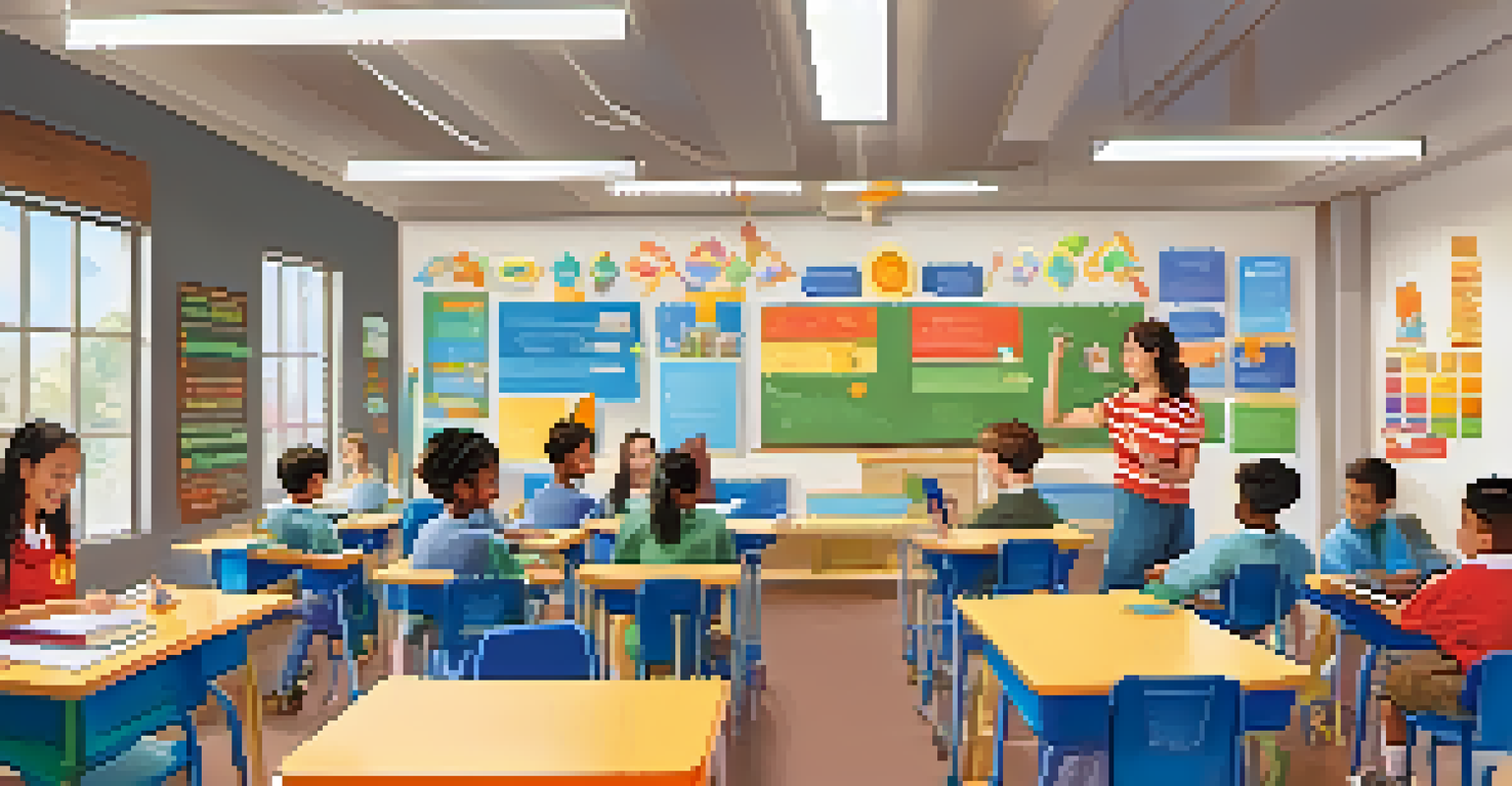Mobile Learning and Gamification: Engaging Students Effectively

Understanding Mobile Learning and Its Benefits
Mobile learning refers to educational experiences delivered via mobile devices, allowing learners to access content anytime, anywhere. This flexibility opens up opportunities for students to engage with materials on their own schedule, fitting education seamlessly into their busy lives. Having access to learning resources at their fingertips can lead to improved retention and understanding of the material.
Mobile learning is not just a trend; it’s a necessary evolution in education.
One of the main advantages of mobile learning is its ability to cater to different learning styles. For instance, visual learners may benefit from videos and infographics, while auditory learners might prefer podcasts or recorded lectures. This personalized approach can make learning more effective and enjoyable for diverse student populations.
Additionally, mobile learning fosters a sense of independence in students, encouraging them to take control of their educational journey. When students are empowered to learn at their own pace, they often become more motivated and engaged, leading to a richer learning experience overall.
What Is Gamification and How Does It Work?
Gamification involves incorporating game-like elements into non-game contexts, such as education, to enhance motivation and engagement. This can include points, badges, leaderboards, and challenges that encourage students to participate actively in their learning. By tapping into the natural human desire for competition and achievement, gamification can transform mundane tasks into exciting challenges.

For example, imagine a classroom where students earn points for completing assignments or participating in discussions. These points can unlock rewards or special privileges, creating a fun and competitive environment. This not only motivates students to engage more with the curriculum but also fosters a sense of community as they work together towards common goals.
Mobile Learning Offers Flexibility
Mobile learning allows students to access educational content anytime and anywhere, seamlessly fitting into their busy lives.
Moreover, gamification can provide immediate feedback, allowing students to understand their progress and areas for improvement. This real-time assessment can help learners stay on track and adjust their strategies accordingly, making the learning process more dynamic and responsive to their needs.
The Synergy of Mobile Learning and Gamification
When mobile learning and gamification are combined, they create a powerful educational tool that can significantly enhance student engagement. Mobile platforms enable students to access gamified lessons and activities wherever they are, making learning more accessible and appealing. This blend not only keeps students entertained but also fosters a deeper connection to the material.
Gamification takes the boring out of learning and replaces it with excitement and engagement.
For instance, educational apps can offer quizzes and challenges that students can take on their mobile devices, turning learning into a game. As students progress through these challenges, they earn rewards and recognition, which can drive them to continue learning. This dynamic approach encourages consistent participation and can lead to better educational outcomes.
Furthermore, combining these two elements allows educators to track student progress and engagement in real-time. By analyzing data from mobile learning platforms, instructors can identify trends, understand what works best, and refine their teaching methods accordingly. This data-driven approach can lead to more tailored and effective learning experiences.
Creating Engaging Content for Mobile Gamification
To effectively implement mobile learning and gamification, educators must create engaging content that resonates with students. This involves using relatable scenarios, interactive elements, and diverse formats to capture students' attention. Engaging content can make complex topics more approachable and enjoyable, leading to a more effective learning experience.
For example, instead of traditional lectures, educators can develop interactive simulations that allow students to practice skills in realistic scenarios. This hands-on approach not only makes learning more engaging but also helps students retain information better. Incorporating storytelling elements can also enhance engagement, making lessons memorable and enjoyable.
Gamification Boosts Engagement
Incorporating game-like elements into education motivates students and transforms mundane tasks into exciting challenges.
Moreover, it's essential to regularly update and refresh content to keep students interested. Incorporating current trends, relevant topics, and feedback from students can help maintain engagement levels. By continuously evolving the content, educators can ensure that mobile learning experiences remain fresh and exciting.
Challenges and Considerations in Mobile Learning
While mobile learning and gamification offer numerous benefits, there are challenges to consider. One major concern is ensuring all students have access to mobile devices and reliable internet connections. Without equal access, some students may fall behind, which can hinder the effectiveness of these innovative methods.
Additionally, creating high-quality, engaging gamified content requires time and resources. Educators must be adequately trained to design and implement these strategies effectively. This may involve professional development or collaboration with tech-savvy colleagues to ensure that the content is both educational and enjoyable.
Finally, it's important to strike a balance between gamification and traditional learning methods. While gamification can enhance engagement, it shouldn't overshadow the core educational objectives. Educators should ensure that the primary focus remains on learning outcomes, using gamification as a tool to support, rather than replace, traditional teaching methods.
Case Studies: Successful Implementations of Mobile Learning
Numerous schools and institutions have successfully implemented mobile learning and gamification strategies, yielding positive results. For instance, a university may have introduced a mobile app that gamifies course materials, allowing students to earn points for participation and completing assignments. This initiative not only increased engagement but also led to higher course completion rates.
Another compelling example comes from a high school that adopted mobile learning tools to support its STEM curriculum. By integrating gamified challenges and interactive lessons, students were more motivated to explore complex concepts like coding and robotics. As a result, the school reported improved test scores and heightened interest in STEM fields among students.
Combining Strategies Enhances Learning
The synergy of mobile learning and gamification creates engaging, personalized educational experiences that improve student outcomes.
These case studies illustrate the potential of mobile learning and gamification to transform educational experiences. By sharing these success stories, educators can inspire others to explore innovative teaching methods that engage students more effectively.
The Future of Mobile Learning and Gamification in Education
As technology continues to evolve, the future of mobile learning and gamification in education looks promising. With advancements in augmented reality (AR) and virtual reality (VR), educational experiences will become even more immersive and engaging. Students may soon find themselves learning in dynamic environments that blend the digital and physical worlds.
Furthermore, the rise of artificial intelligence (AI) can personalize learning experiences even further. AI could analyze students' learning patterns and preferences, delivering tailored content and challenges that suit their individual needs. This level of customization can enhance student engagement and outcomes, making learning more effective than ever.

In conclusion, the integration of mobile learning and gamification is not just a trend; it's a necessary evolution in education. As we embrace these innovative approaches, we can create engaging, effective, and accessible learning experiences that prepare students for the challenges of tomorrow.